Free Range Eggs are eggs produced by chickens that have access to the outdoors. Simply put, if you’re getting eggs from your backyard chickens, chances are they’re free-range! There is a slight distinction between free-range and cage-free, as cage-free chickens may spend their entire lives indoors.
Most people keep backyard chickens for the constant supply of fresh eggs that they provide. Whether you’re a newbie to chicken keeping or a seasoned pro, this guide will help explain the ins and outs of choosing the right breed, which chickens lay blue eggs, handling and storage, and more so you can make the most eggucated choices for your ladies!
Quick Jump
Chapter 1: Egg-Laying Chickens
Chapter 2: Egg Production
Chapter 3: Egg Handling & Storage
Chapter 4: Egg Nutrition
Chapter 5: Egg Problems
Egg Laying Chickens

Best Egg Laying Chickens
When choosing the right breed of chicken to supply your eggs, you’ll want to know how many you want or need. Some chickens, such as the Australorp and Plymouth Rock breeds, can lay nearly an egg a day, while breeds like the Red Jungle Fowl may only give you an egg a week.
Regardless of which breed you choose, you’ll want to make sure you’re collecting your eggs at least twice a day to make sure they’re clean and at peak freshness.
Luckily, it’s not all guesswork, and below we have provided a list of the 12 best egg-laying chickens available.
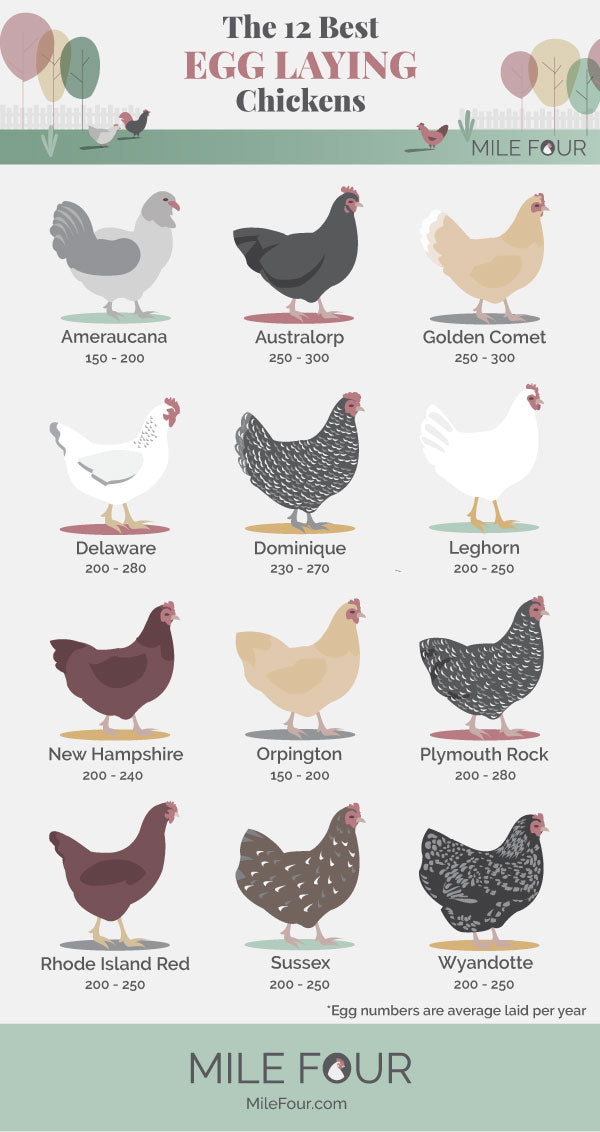
Share this Image On Your Site
Chickens That Lay Blue Eggs
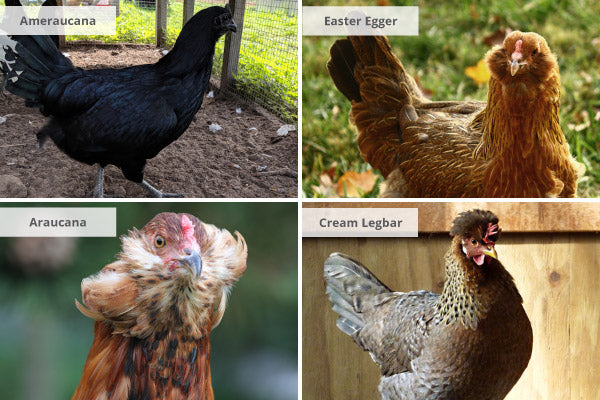
Blue eggs have become more and more popular over the last few years. Not always a popular item, many chicken keepers have found themselves flocking to get the following breeds to produce blue eggs.

Ameraucana
Derived from the Araucana chickens, the Ameraucana was developed in (you guessed it) America in the 1970s. It was bred specifically to keep the blue eggs of the Araucana, without the breeding problems that are inherent to Araucana’s.
Ameraucana’s will start producing eggs later than the average breed, so expect to wait up to seven months to see any eggs, but once they start producing, you’ll see around three to four medium-sized eggs a week.
Easter Egger
The Easter Egger is not a specific breed of chicken, per se, but is the distinction used for chickens that lay blue eggs and do not meet any of the breed standards set out by the American Poultry Association (APA).
An extremely friendly breed, Easter Eggers will start laying at around seven months, and will generally lay around four large eggs a week.
The Easter Egger would be the perfect addition to a family flock and even better for beginners. Their friendliness, in addition to their laying abilities, would make this chicken an excellent pet for years!
Araucana
The Araucana is the chicken that started the entire blue egg trend. Not to be confused with the Ameraucana, the Araucana originated in Chile and was the precursor for its hybrid cousin.
If you want to welcome an Araucana into your backyard, you’ll have to find a dedicated breeder. As we mentioned earlier, the Ameraucana was bred to eliminate the health problems that are inherent to Araucana’s.
The tufts that grow out from the side of their cheeks cause some chicks to die while being incubated. This means that they’re quite a hard breed to find at a standard hatchery.
The Araucana will lay around three medium-sized eggs per week and would easily become a welcome part of a family flock with their friendly and high-energy temperament.
Cream Legbar
Somewhat rare (but growing in popularity) in the United States, this British chicken is sure to add some color to your eggs! The Cream Legbar was bred specifically for excellent egg production, and with some reporting their Legbars laying more than 200 a year, you can see that it worked!
Despite being a generally friendly breed, the Cream Legbar has been known to be highly strung and doesn’t like being cooped up too much.
The Cream Legbar will lay medium-sized eggs at a rate of around four per week. These birds are smart, too! They adapt well to a backyard farm but flourish in a free-range setting, and do well to avoid predators in both scenarios
Egg Color Guide
Chickens and their eggs come in all shapes and sizes, but if you’re choosing breeds specifically for their egg color alone, our graphic below will help you pick the right chickens to build your flock.
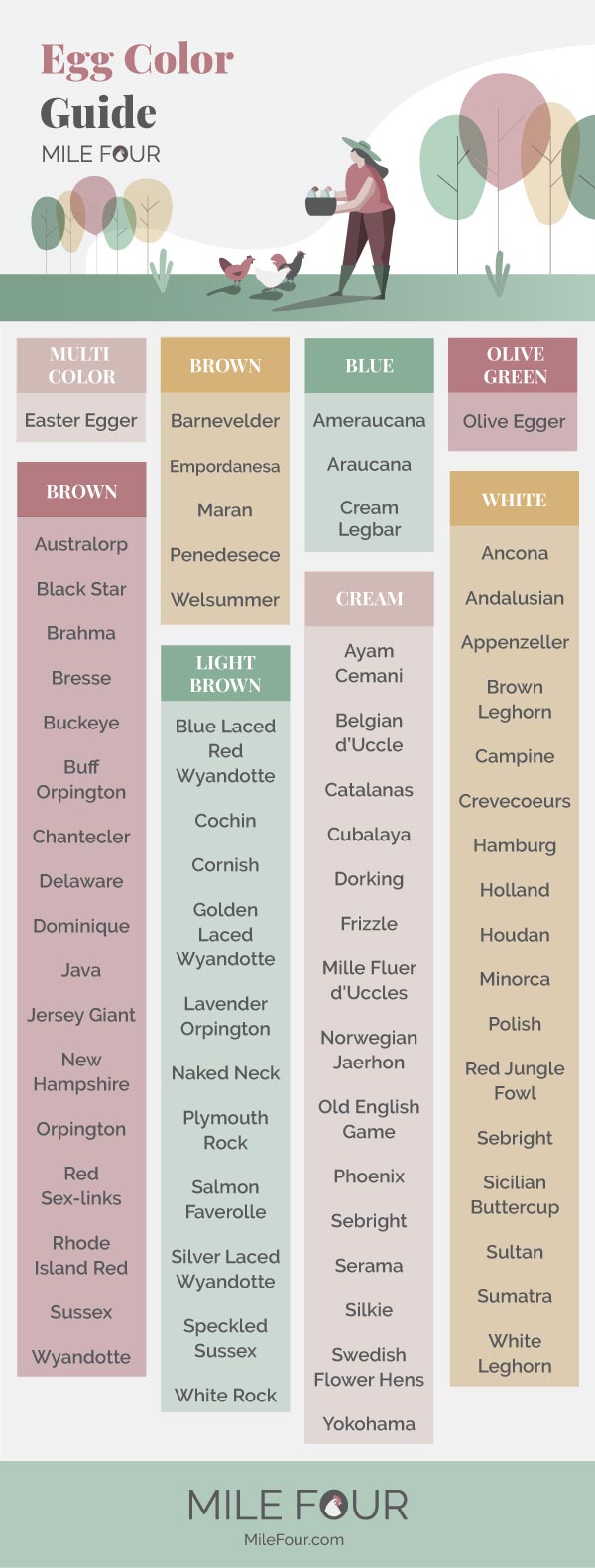
Share This Image On Your Site
Egg Production

How Often Do Chickens Lay Eggs?
The frequency that chickens lay eggs all depends on the breed. Some will only lay one per week, but breeds like the Rhode Island Red have been known to lay one egg per day!
Regardless of the frequency of egg-laying, chickens need certain conditions to improve their rate of lay. Temperatures between 45 and 80 degrees Fahrenheit are ideal. Light is also a factor, and most hens will stop laying in the winter because there simply isn’t enough light in the day during the winter months.
As your ladies age, the size of their eggs will increase in most cases too. This is because egg size is mostly based on the weight of the chicken. The size of the eggs also depends on the breed. Chickens lay eggs on a scale from Peewee to Jumbo with Small, Medium, Large, and Extra Large in between. On average, the smallest (Peewee) eggs weigh around 35 grams, with the largest (Jumbo) eggs sitting at about 70 grams.
Below we have provided a graphic with the laying rates of popular breeds. If you’re looking for a strong layer, we’ve got you covered!

Share This Image On Your Site
When Do Chickens Stop Laying Eggs?
There are many different reasons why a chicken would slow down or stop laying eggs from age to diet and even disease. Below we’ll explain the most common reasons you’re not seeing as many eggs in the coop.
Age
Generally speaking, hens will lay the most eggs in their first year. Good layers will continue their trend for up to three years, but age catches up to all of us, especially chickens. Egg production will slow throughout a hens life and it’s likely that your ladies will stop laying after around seven years.
Seasons
Chickens need light to lay. During the winter months, there isn’t enough light in the day to provide the ideal scenario for them to produce eggs. Chickens are using their extra calories to provide heat, meaning they won’t start producing again until the spring. This is generally not too much of an issue if you live in an area where the day lengths don’t change too much. Looking at you, California!
Molt
Molting is a stressful and sometimes painful experience for a hen, and because it uses up so much of a hen’s resources, it slows egg production down. Molting is usually over in a few weeks, but to keep it as short as possible, you should be providing your hens with the best nutrition possible during this time, including high protein treats. This can help to cut down the time you’re without eggs.
Diet
The majority of a chicken’s diet should come from their feed. Treats should, of course, be included, but you could see a drop in egg production if you’re feeding them too many.
A complete layer feed diet should give your girls enough nutrition to keep their egg-laying on track, but supplements like Oyster Shell will help keep their calcium levels up.
Hens with low calcium levels could start to produce misshapen eggs, and it can also lead to hens eating their own eggs. This is because they aren’t getting that dietary calcium from other sources.
If you’re depriving your hens of dietary calcium, think for a second that it would be similar to you not being able to eat things like cheese and almonds!
Below we’ve provided a graphic for many of the reasons why egg production may slow down or stop entirely.

Share This Image On Your Site
How Long Do Chickens Lay Eggs?
As previously mentioned, the first three years of a hen’s life will be their best for egg production, but this doesn’t mean that they’ll completely stop afterward.
Keeping your ladies healthy is key for egg-laying, and some hens will lay for more than a decade! Of course, the frequency of these eggs will be lower as their productivity drops with age.
Below we’ve provided a graphic to show the egg-laying productivity of the average hen.
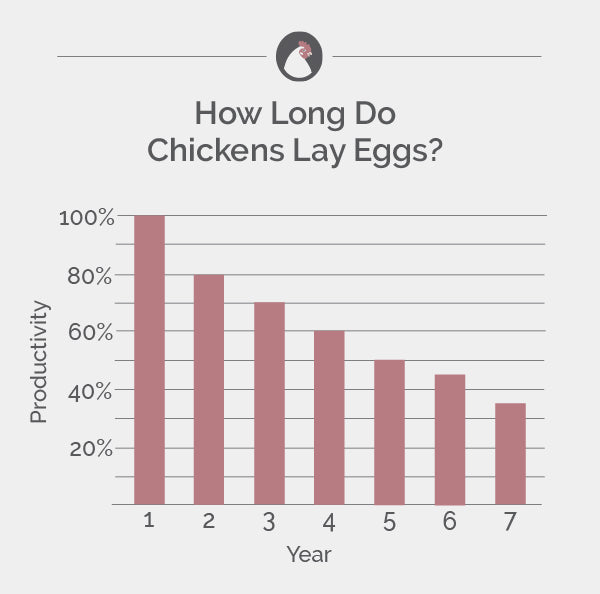
Egg Handling & Storage

Collecting Eggs
If you have more than one hen (and you should) in your backyard farm, you should be collecting eggs at least twice a day. This stops eggs from getting dirty or broken, and in prime laying months in the spring and summer, it’ll stop them from spoiling due to the warm weather.
The best way to manage egg collection is with a good nesting box. Check out our Nesting Boxes Guide for more information!
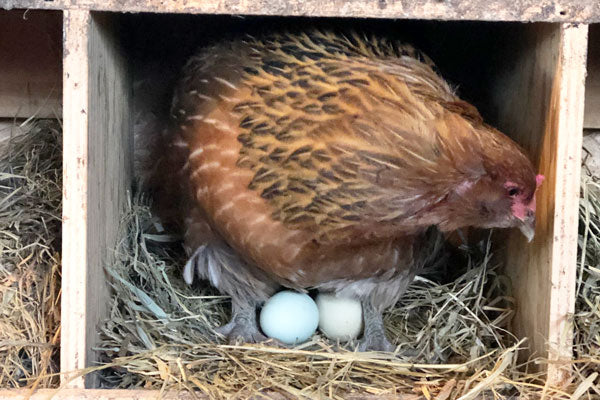
Try not to wash your dirty eggs too much. Eggs have a “bloom” that keeps them fresh, and washing the dirt off will also wash the bloom away.
If you are starting to encounter dirty eggs, it’s generally more about coop cleanliness than anything else.
We highly doubt you’re neglecting your chicken’s living space, but if you start to notice dirty eggs, you may want to check that they have enough space and that the space and their nests are clean.
You’ll also want to solve the root of the problem. Check to see if they are tracking in dirt from the run/entrance to the coop, and clean their feet accordingly along with preventing the buildup of dirt where the chickens run the most.

Egg Storage
Inevitably, unless you’ve got more friends than us, at some point you’ll have more eggs than you can possibly know what to do with.
Preserving these eggs will be key, especially when you encounter a time when you don’t have enough for all of those friends you’ve got.
Below is a handy guide to give you an idea of how long you can keep your eggs fresh in different situations.
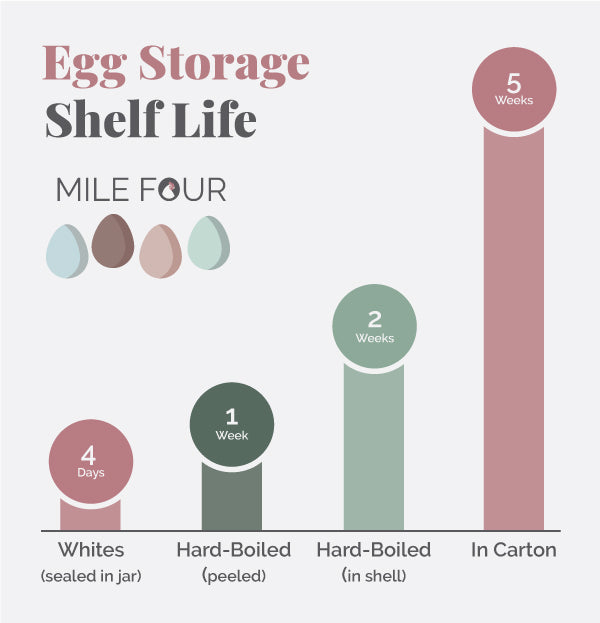
Share This Image On Your Site
If you’re planning on storing your eggs in your fridge, the bottom shelf in their carton is the way to go. Built-in fridge egg-storage is bad! These built-in contraptions often lack a cover and get bumped around every time somebody opens the fridge door.
As a general rule, if you follow the guidelines for fridge storage, your eggs will stay fresh for up to two months.
Freezing (if you didn’t guess) is definitely the best storage method for eggs. You’ll be able to keep your eggs fresh for up to 12 months this way! The trick here is to remove the shells first since they’ll expand and break if you don’t.
Break your eggs into a bowl, then whisk to blend the yolks and whites together before transferring them into a freezable container (like an ice cube tray). Then transfer them into a storage bag once frozen. This will keep them fresh and ready for any recipes you’re planning.
Candling Chicken Eggs
Candling eggs is the process of viewing the inner contents of an egg by placing it in front of a bright light. The reason it's called “candling” is that they used to use a…...candle. Shocker, eh?
Candling is used to estimate the age of an egg. When you’re shining the light onto the egg, if you can barely see the yolk, you’ve got yourself a fresh egg, but if you’re seeing the yolk move around the egg freely and clearly, you’ve probably got an egg that’s older.
The best way to candle an egg is to hold the egg with your thumb and first two fingers. Place the flashlight facing the egg and yourself. By tilting the large end of the egg slightly toward the light, you’ll be able to examine the contents of the egg.
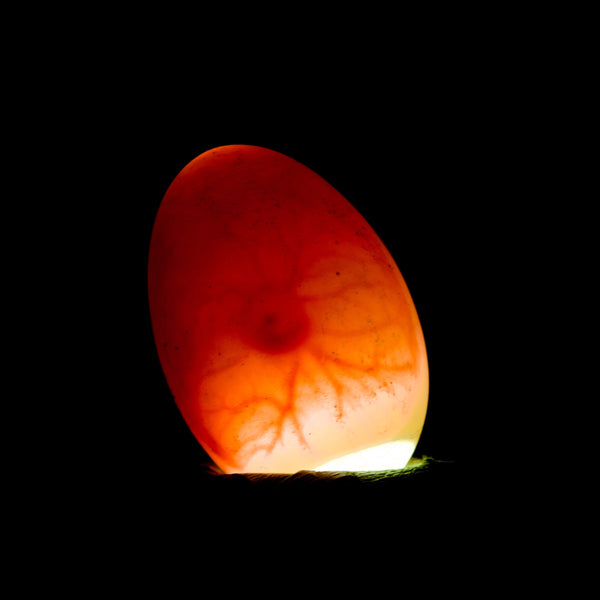
Egg Nutrition

What to Feed Laying Hens
From the moment hens start laying eggs, they should be fed layer feed. Layer feed is 16% protein and contains more calcium than grower and starter feed to help produce strong eggshells. Laying hens eat about 1 1/2 lbs. to 1 3/4 lbs. a week.
16% Layer feed is generally sufficient for most flocks, but you may consider using 18% Grower Feed in the colder months when your ladies need the extra protein to stay warm.
If you’d like more information on what to feed your girls, check out our Ultimate Feed Guide that is full of nutritional information to aid your decision making!
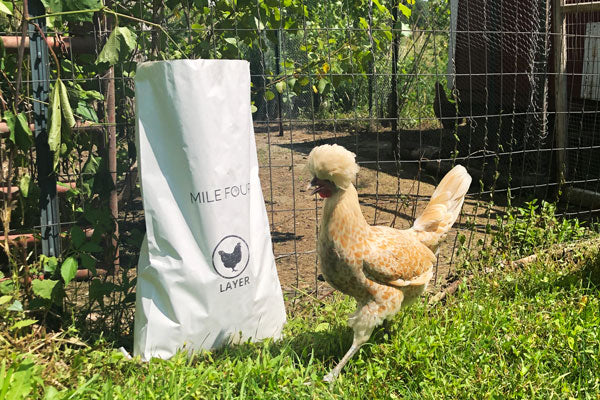
Egg Yolk Color
Egg yolks can vary widely in color, and it can depend a lot on what your hens are eating. Colors can range from a golden yellow (that you’re likely used to) to deep orange and even green!
Green yolks are caused by chickens eating Shepherd’s Purse, which they LOVE. Green yolks can also be caused by simply boiling them for too long, but we’re sure you’re experts at that by now!
Below we’ve made a graphic to detail the different yolk colors and the typical causes for them.
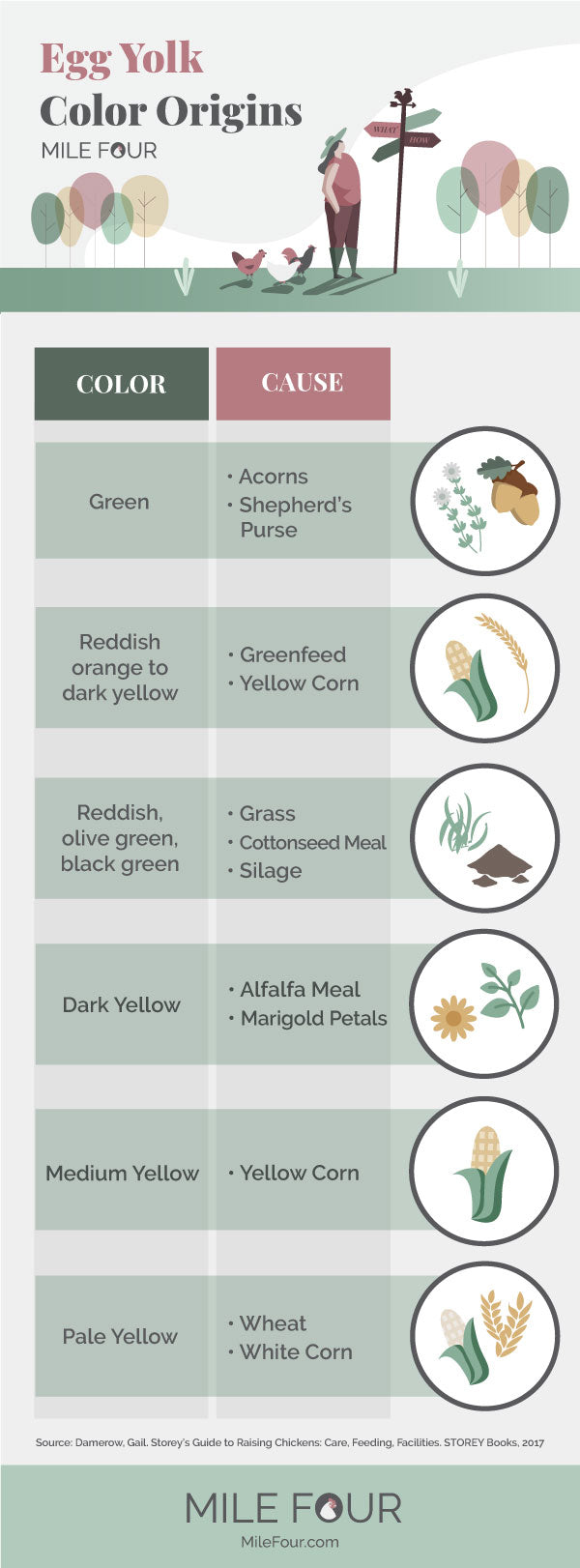
Share This Image On Your Site
Nutritional Value of Eggs
We’ve used this guide to talk all about your hens, but what about you?! One of the best things about having chickens is being able to use their eggs for the many nutritional benefits they bring!
Not only are eggs delicious, but they are also packed with vitamins and essential nutrients that can prevent certain cancers, help improve your vision, and even improve brain and liver function.
Below you’ll find a graphic we made detailing the different nutritional benefits of eating the eggs your ladies produce!

Share This Image On Your Site
Egg Problems

Chickens Eating Eggs
There are a few different reasons why chickens would eat their own eggs. Calcium levels could be low which is why your hen is trying to supplement that calcium with an egg, but it could also be due to an accidental breakage in an overcrowded coop.
Giving hens enough space to lay (12 square inch nest for every four hens) will ensure that they don’t accidentally stumble upon a broken egg and develop a taste for them. After all, they are delicious.
It’s a hard habit to break once it’s started, so ensuring the chicken’s living space as well as its nutrition is up to scratch (ha!) will help prevent egg eating before it starts.
Soft Egg Shells
Similar to hens eating their own eggs, soft eggshells are an indication of low calcium in their diet, but it can also be due to age. Hens lay thinner and weaker eggs as they age because the eggs they lay are bigger.
Soft eggs can also be due to stress. If your ladies are exposed to predators, dogs or children often, they could lay prematurely, leading to soft shells.
One other nutritional deficiency could be Vitamin D. Make sure you give them the sunlight they need year-round so their egg quality doesn’t take a turn for the worse.
One preventative measure you can take is feeding your girls Oyster Shell. This will provide the calcium for stronger eggs, and your layers will eat it as needed.
After reading this, you should know all there is to know about your hen’s eggs, but if you have any egg tips and tricks to share, chime in below. We can’t wait to hear from you!
Additional Resources:
A very informative article from CertifiedHumane.org
Another great article from The Spruce.


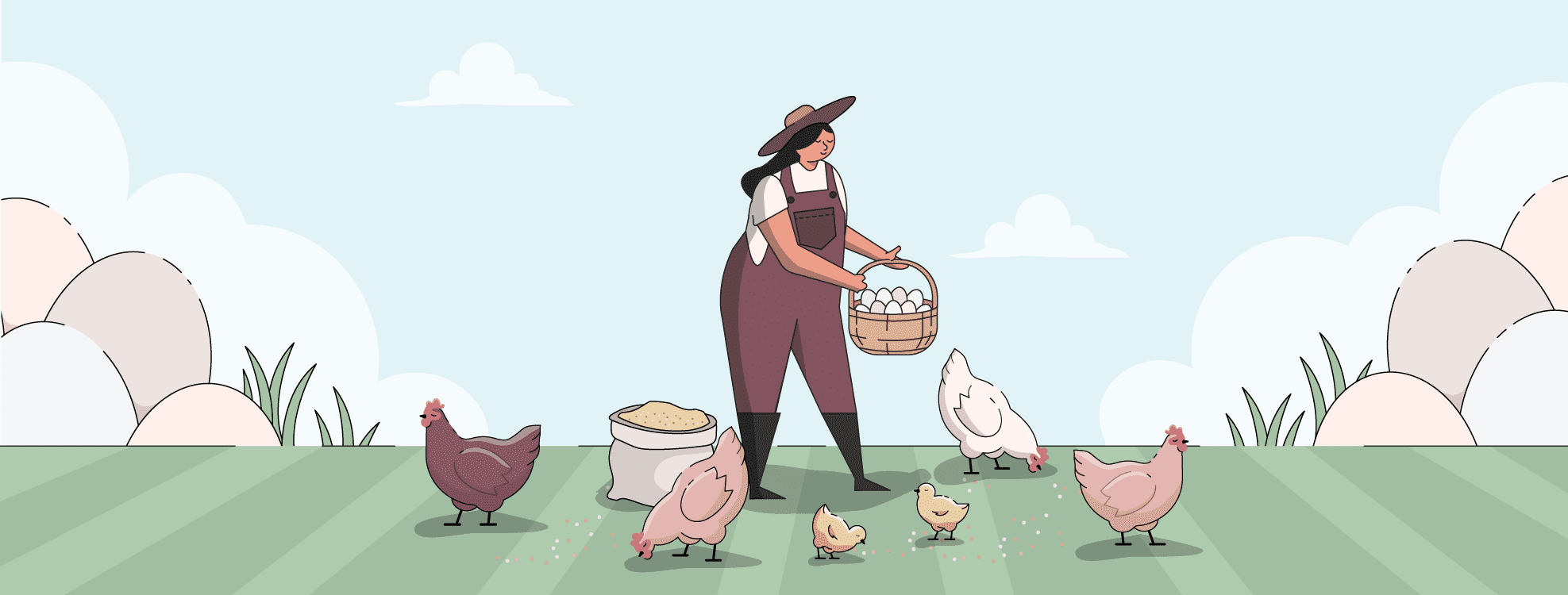
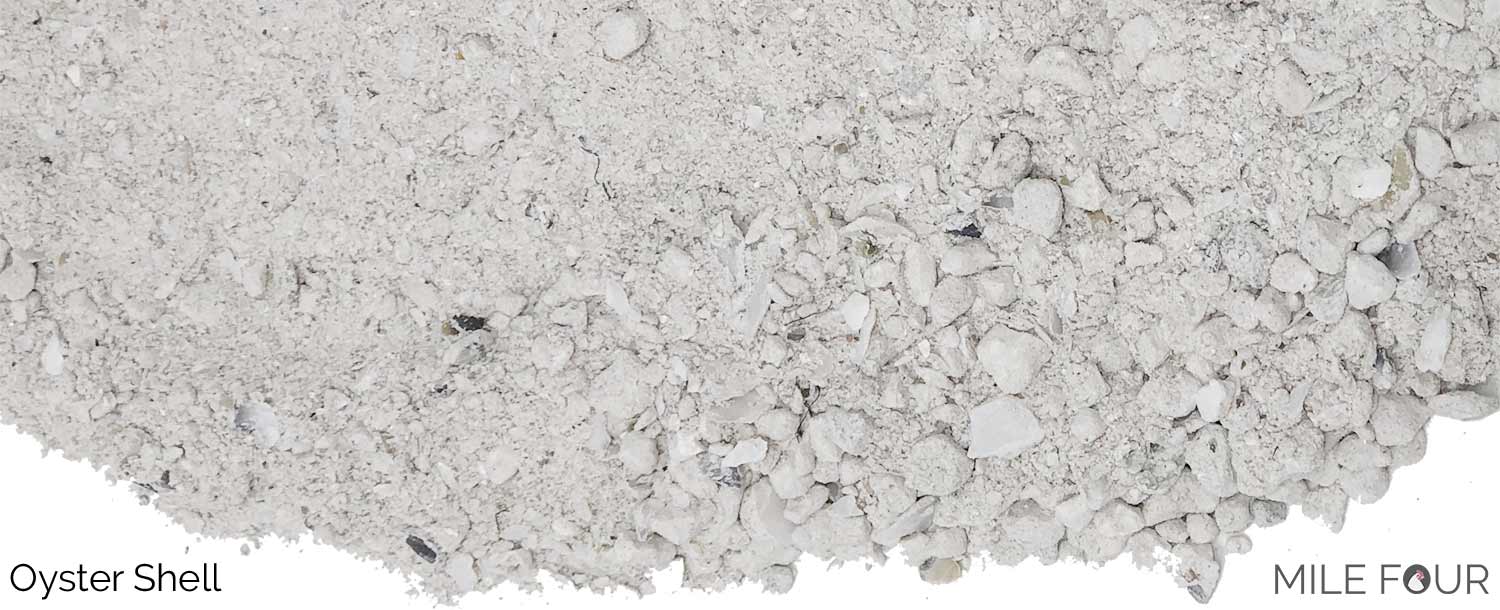
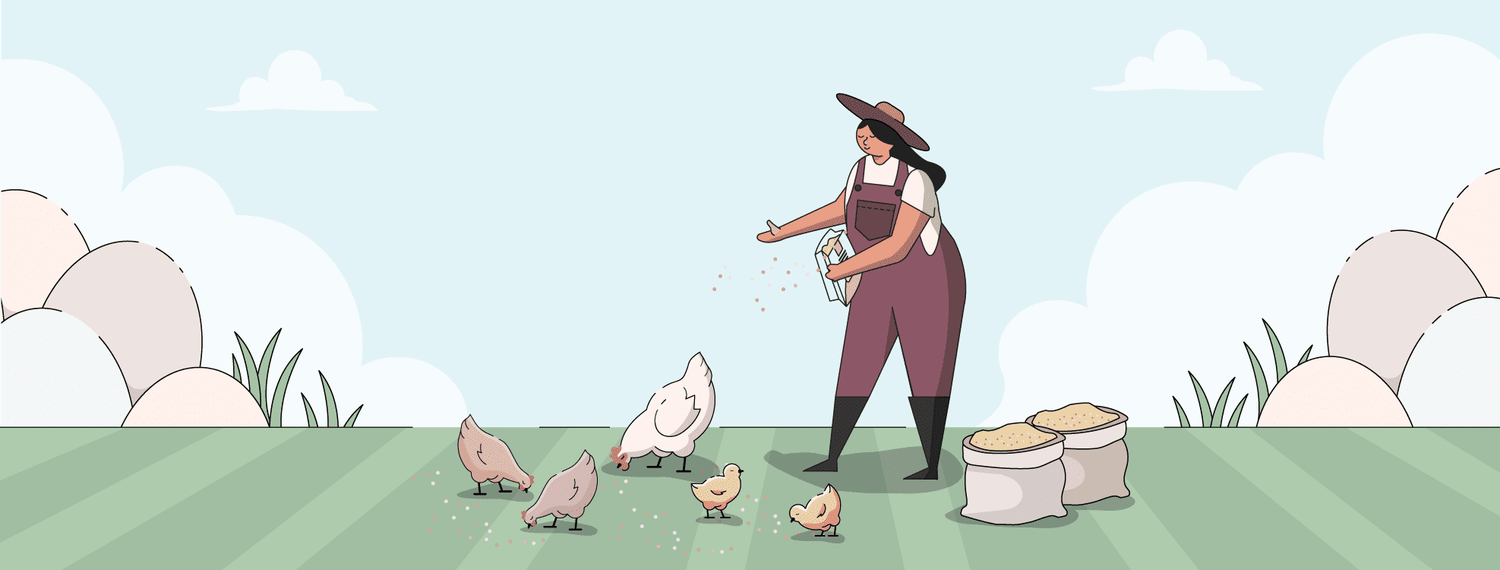

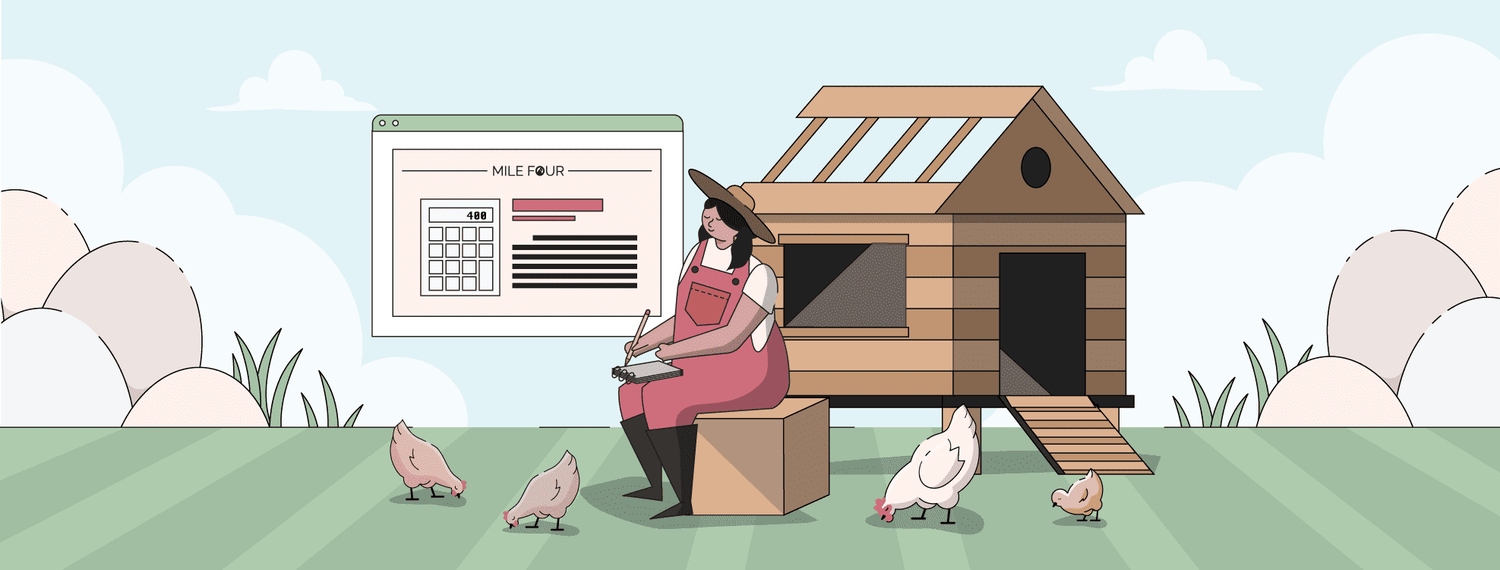
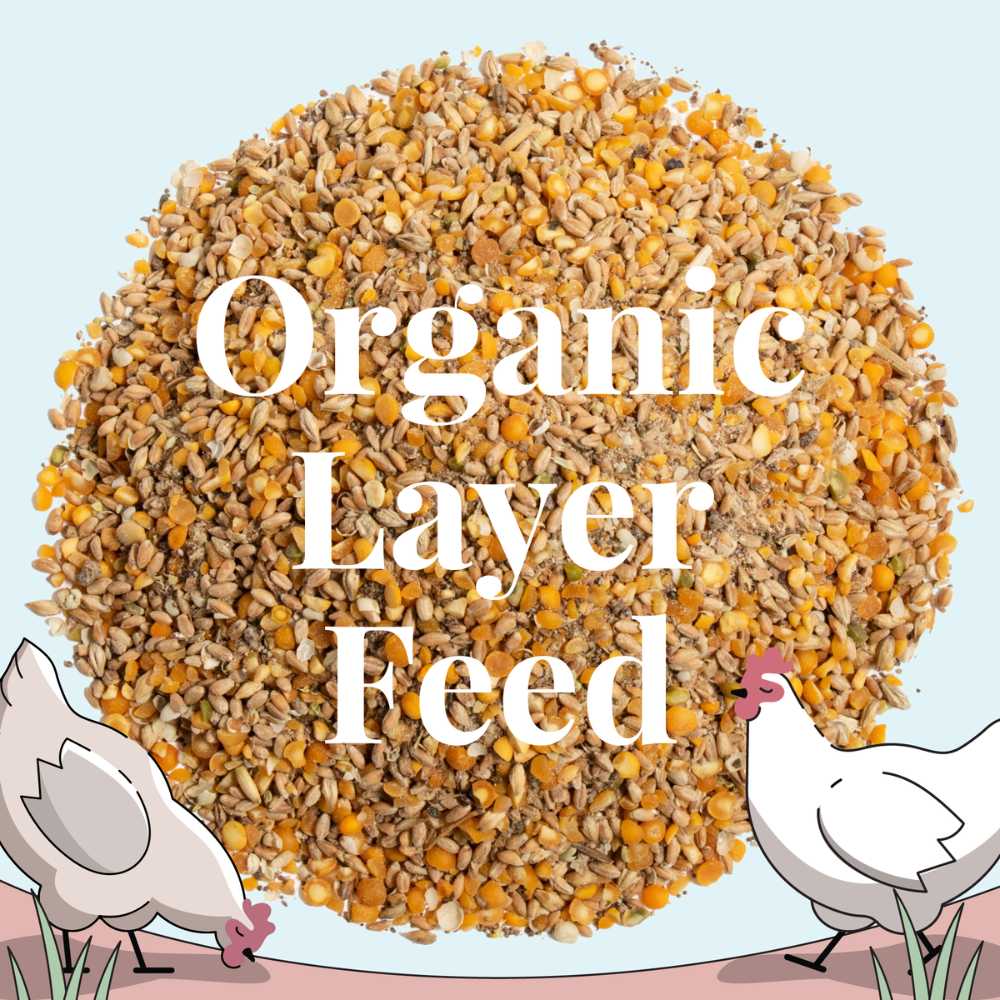
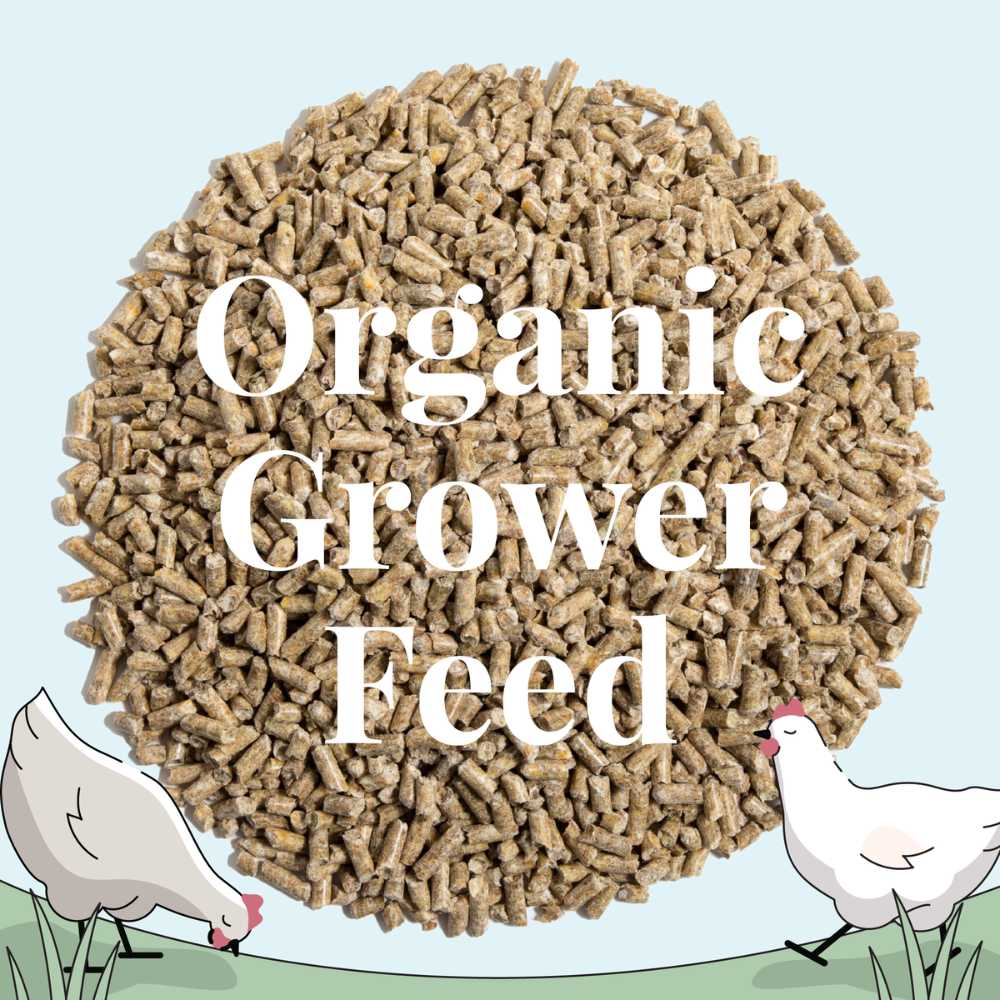
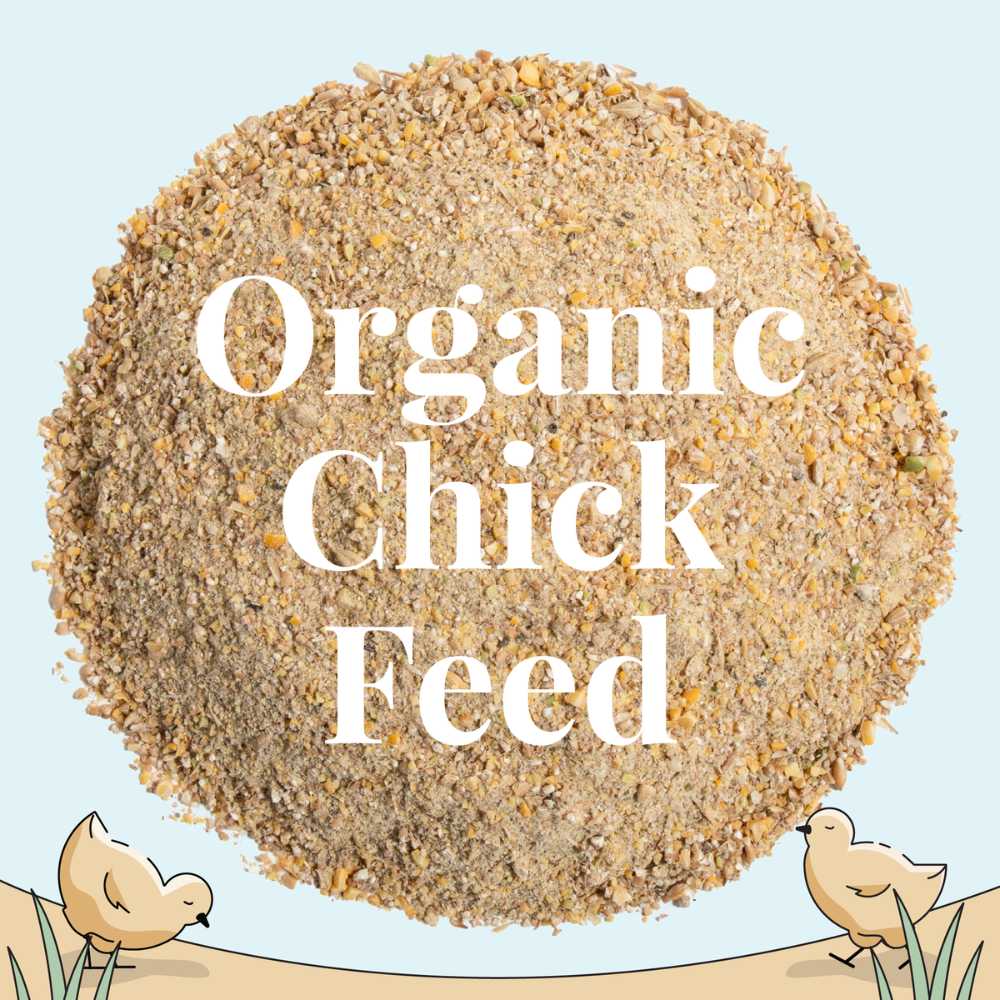
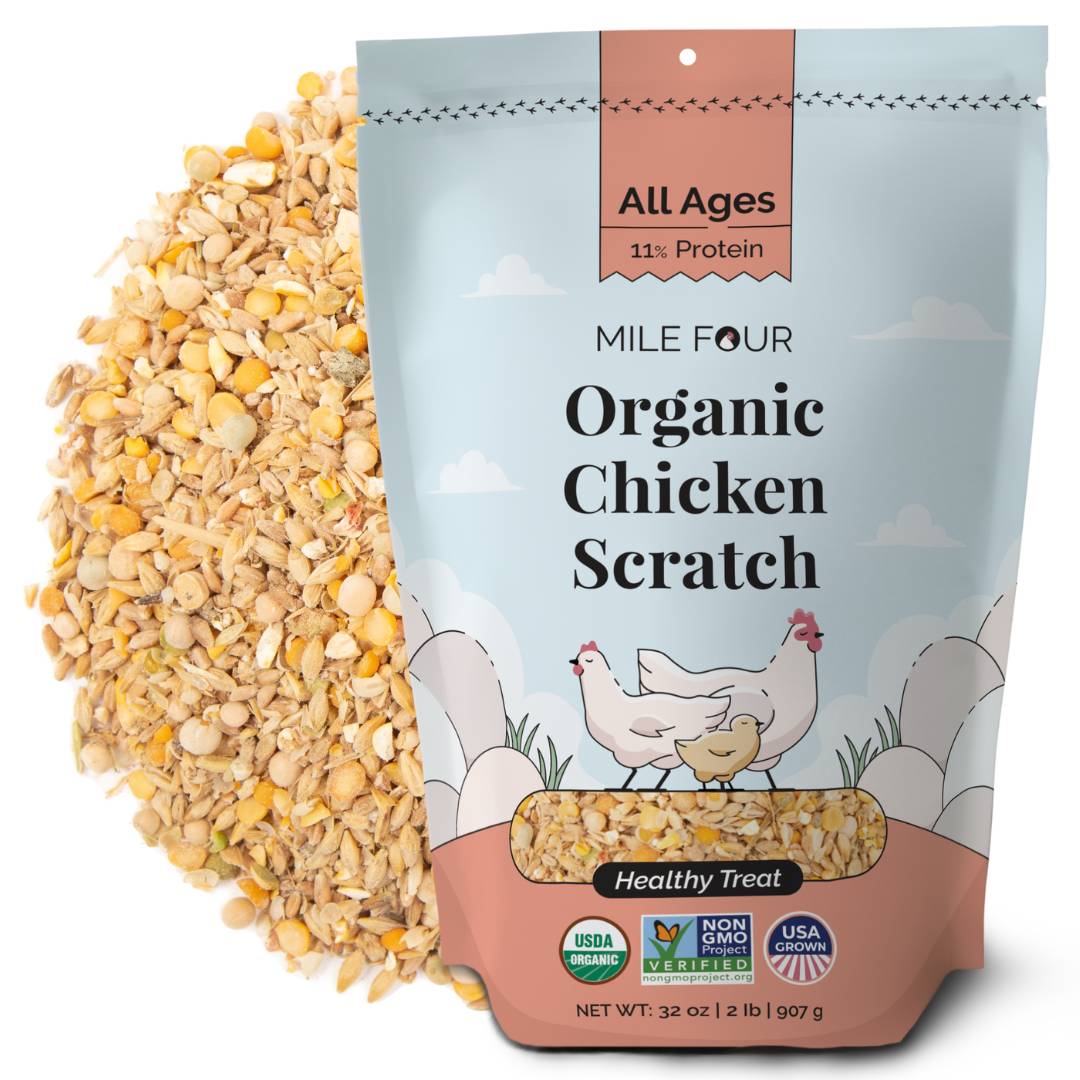
1 comment
Establishment for forage